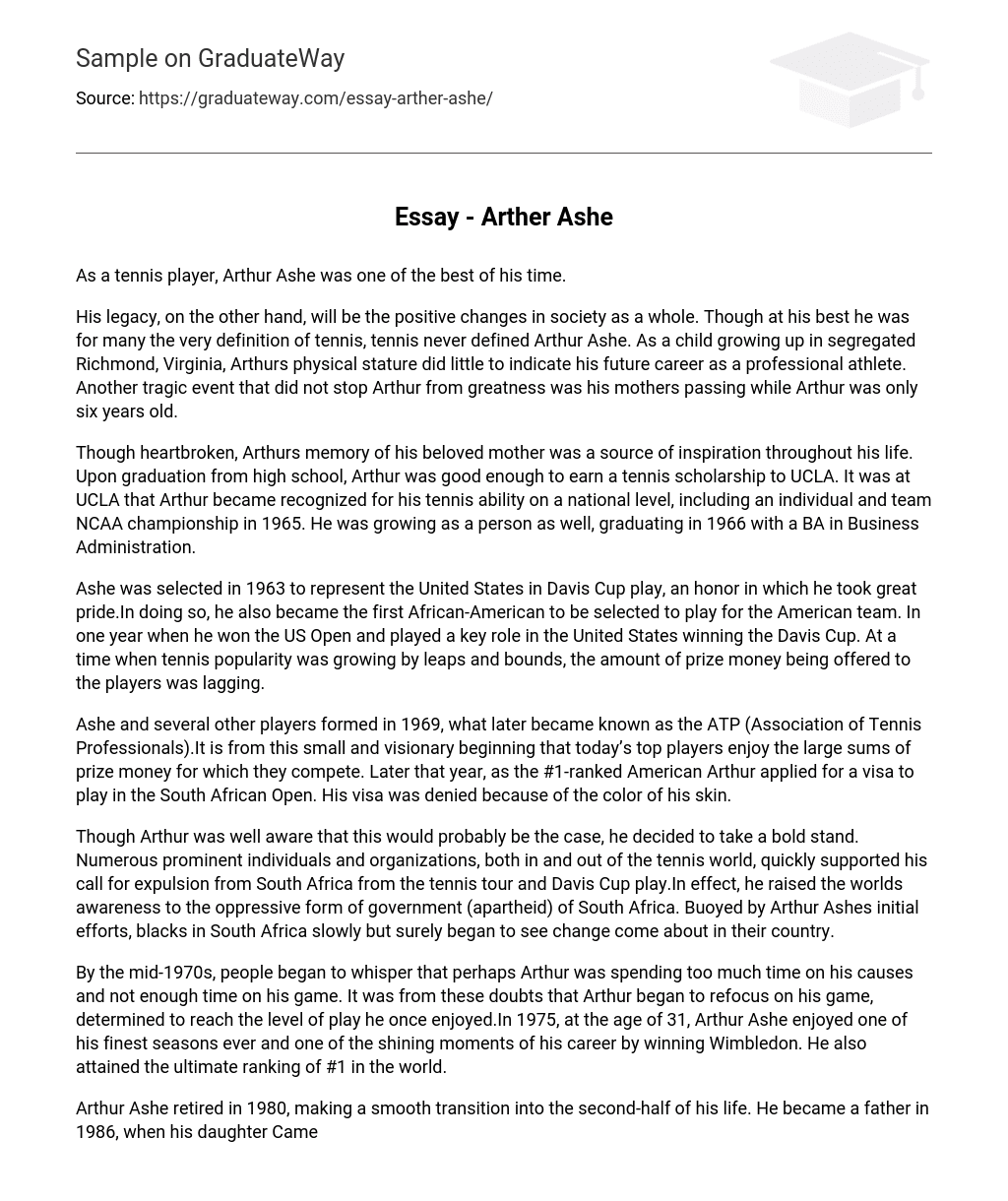During his time, Arthur Ashe was an outstanding tennis player.
While tennis was seen as the highlight of Arthur Ashe’s life, it did not solely define him. His contributions to society and lasting influence were a result of his efforts to enact positive change. Despite growing up in a racially divided Richmond, Virginia, Ashe’s appearance did not hint at his future success as an athlete. Moreover, even the tragic death of his mother at the age of six did not prevent him from achieving greatness.
Despite experiencing heartbreak, Arthur found inspiration in the memory of his beloved mother throughout his life. His talent in tennis earned him a scholarship to UCLA after finishing high school. While at UCLA, Arthur’s tennis skills gained national recognition and he ultimately achieved victory in both individual and team NCAA championships in 1965. Graduating with a BA in Business Administration in 1966, Arthur’s personal growth was clearly evident.
As the first African-American to be selected for the American team in Davis Cup play, Ashe considered this a great honor. In 1963, he represented the United States and also achieved victory in the US Open, contributing significantly to the United States’ Davis Cup triumph. Despite tennis gaining immense popularity, the prize money offered to players remained insufficient during this period.
Ashe, along with other players, founded the ATP (Association of Tennis Professionals) in 1969. This pioneering effort set the stage for the significant prize money that today’s top players vie for. In that same year, Arthur, who held the title of top American player, sought a visa to compete in the South African Open. Unfortunately, his visa request was denied based solely on his skin color.
Arthur Ashes, fully aware of the likely outcome, bravely took a stand. Many influential figures and institutions, both within and beyond the tennis community, promptly backed his demand for South Africa’s removal from the tennis tour and Davis Cup participation. Ultimately, his actions shed light on South Africa’s oppressive regime of apartheid. Encouraged by Arthur Ashes’ initial endeavors, the black population in South Africa gradually witnessed positive transformations unfolding in their nation.
In the mid-1970s, concerns arose that Arthur Ashe was prioritizing his causes over his game. These doubts led Ashe to refocus on his game and strive to reach the same level of play he had previously achieved. At the age of 31 in 1975, Ashe had a remarkable season and achieved one of the highlights of his career by winning Wimbledon. He also attained the prestigious ranking of #1 in the world.
Arthur Ashe retired from tennis in 1980 and entered the next phase of his life. In 1986, he became a father to his daughter Camera Elizabeth. Two years later, their lives took a drastic turn when Arthur received the devastating news of being HIV-Positive while undergoing brain surgery at the hospital.
Arthur contracted this virus during a heart surgery in 1983. He made his condition public in a press conference on April 8, 1992, expressing concern about the permanent impact it would have on his life and his family’s. Despite his illness, Arthur continued to raise awareness about AIDS and successfully shifted the prevailing sentiment from fear to something else. He passed away on February 6, 1993, leaving behind a remarkable tennis career as well as playing a significant role in ending apartheid in South Africa.





